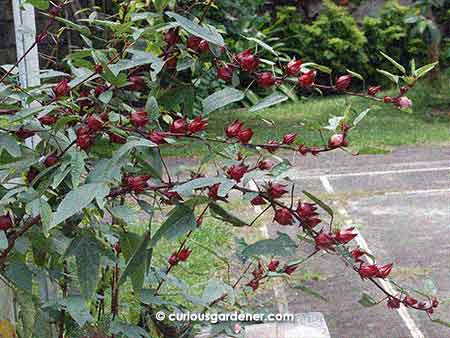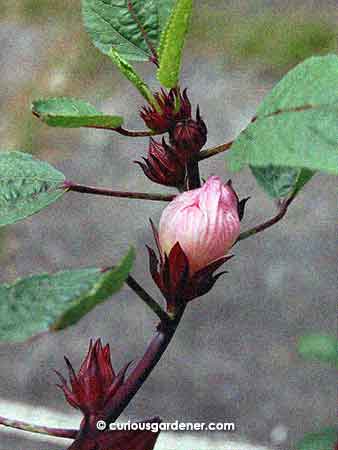
These branches were so weighed down by fruits that a heavy downpour would have broken the plant stems
The roselle plants were dipping lower and lower because the branches were absolutely laden with fruits, so we decided to harvest them and make another lot of roselle syrup.
This harvest included over 50 roselle fruits. We soaked and rinsed the calyces after harvesting them, then separated the inner seed pods from the calyces. We rinsed the prepared calyces again before boiling them because the pods, depending on their maturity, felt a little gummy or gritty. You may also want to wear a glove on the hand holding the fruit because your skin may start to itch because of the gummy/gritty ooze from the fruits.
When making the syrup, I like to use about double the amount of water to the quantity of calyces. The boiling process doesn’t take very long – up to about 15 minutes for it to come to a boil and for the calyces to shed their colour and flavour into the liquid. I stop boiling when they become translucent. Then it’s time to remove the calyces and let them cool before adding them to the compost heap. While the liquid is still warm, I sweeten it just a little, because some people don’t like things overly-sweet, and those who want it sweeter can add more, to taste, later. When it cools, it gets stored in the fridge.

This is the point along the stem where the fruits start from behind the flower, and the buds are in front of it. They look almost the same in both stages, don’t they?
We got just over 2 litres of syrup from this lot this time. I think it will last us a while, because it’s rather concentrated and will stretch for quite a while…
© 2013 curiousgardener.com All rights reserved.

